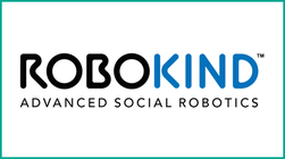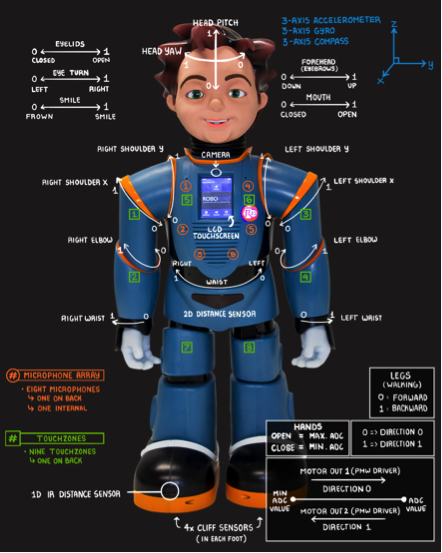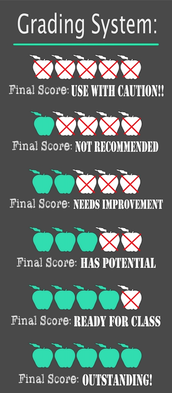
More specifically, Milo is meant to help students with ASD tune in on emotions, express empathy, act more appropriately in social situations, self-motivate, and generalize skills they’ve learned.
Before jumping into the review, this video provides an overview of how Milo can be used to by therapists and special education teachers to support the development of social and communication skills for students with ASD and transform the way therapy is delivered.
Robots4Autism: 2018 Overview from RoboKind on Vimeo.
And for those more interested in the technology side of Milo, this video explores the technology and design process behind creating the robot.
Before moving further, it is incredibly important to note that Milo is not meant to be used as a replacement for therapists or special education teachers. Milo’s curriculum is meant to be used in conjunction with a therapist or educator, where the student would work with Milo for a set time each week, but would not be seen as a replacement.
It’s also important to note that this isn’t the type of situation where a school or district would want to purchase 1 robot for each student. In general, you would need one Milo robot per school or even per district, depending on how many students you are trying to support. The general use case would be a situation where students with ASD spend an hour weekly or biweekly session with Milo. Based on this, a single robot can potentially meet the needs of around 30 students.
Milo is designed to help deliver the following evidence-based practices in order to help students with ASD practice and develop social skills:
• Social narratives
• Video modeling
• Visual supports (picture symbol icons)
• Natural modeling
• Prompting verbal and visual
• Reinforcement of target behaviors
• Social skills training
Milo does this through the use of features such as modeling expressions with its facial muscles, walking, moving its arms, etc. The robot can also deliver repeated instructions, as many times as needed, in a consistent, repetitive, supportive way. Additionally, Milo verbally delivers interactive lessons with a simplified language while at the same time providing visual support icons to aid auditory processing and comprehension. Plus, Milo can collect progress data from students to share with parents, facilitators, and therapists.
To explore what this looks like in action, this video provides an overview of Milo and how the robot is being used in South Carolina to support students with ASD:
As mentioned above, Milo also includes a complete social emotional learning curriculum. The curriculum was developed by autism experts from the Autism Treatment Center of Dallas and the Callier Center for Communication Disorders at University of Texas–Dallas. The research-based curriculum has been specifically designed to teach students with autism the understanding and meaning of emotions and expressions and to practice appropriate social behavior and responses.
The curriculum is broken down into the following modules:
• conversational modules (e.g., initiating greetings, conversation dynamics)
• emotional understanding modules (e.g., identifying and imitating facial expressions)
• situational modules (e.g., playdates, being a guest at a birthday party)
Additional information on the curriculum and how Milo’s lessons work can be seen in this video:
Finally, for those interested in further exploring the curriculum, implementation examples, or reasoning behind Milo, the Robokind Vimeo channel is full of additional resources.
Overall, students and teachers working with Milo have experienced numerous successes in supporting the development of social and communication skills. Additionally, the research that has been conducted with Milo has shown impressive efficacy and engagement results from students using the robot and curriculum.
If you work with or support students with ASD, and are interested in exploring the Milo robot further, you can contact the Robokind team to request additional details, pricing, and demos. Based on the numerous successes and beneficial experiences teachers and students have reported with Milo and the curriculum, I believe this would be a beneficial resource for anyone supporting students with ASD.
I was not compensated for writing this review.
















 RSS Feed
RSS Feed
